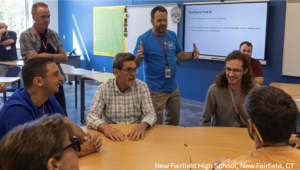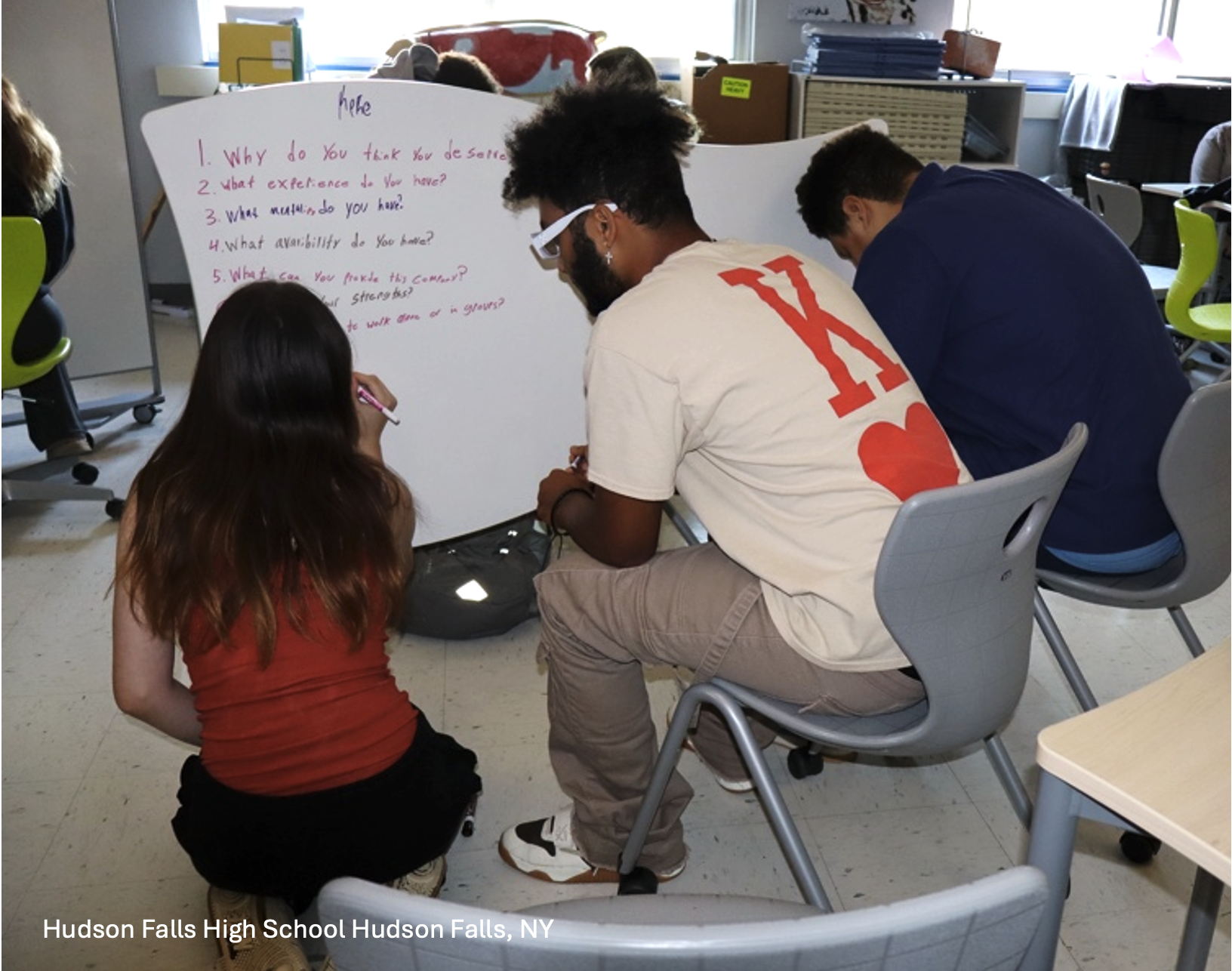Caption: Leaders and educators at New Fairfield High School in New Fairfield, Conn. Photo Credit (all): Courtesy of VS America
By Jill Ackers and Courtney Sevigny
Transforming learning spaces is about more than updating furniture or redesigning classrooms—it’s about shifting mindsets, evolving leadership and creating shared language around how space supports learning. Listening to students, supporting teachers, communicating clearly, engaging in continuous learning and challenging the status quo create the conditions for meaningful transformation.
The most profound transformations happen when leaders evolve alongside their schools. In collaboration with fellow school leaders, teachers and students, five key lessons emerged about leading in an ever-changing environment shaped by furniture, flexibility and function.
Leadership Means Lifelong Learning in Dynamic Spaces
Author Maya Angelou’s words resonate in moments of uncertainty: “Do the best you can until you know better. Then, when you know better, do better.” Leadership is about modeling this mindset—acknowledging when something isn’t working and adjusting accordingly.
In flexible learning spaces, this means understanding how furniture choices impact engagement, accessibility and movement.
As a native Rhode Islander, Courtney Sevigny, ECLPS, learning environment specialist for VS America, likes to think of the administrator as the captain of a ship. In calm waters, the captain sets the course, guides the crew and delegates roles. In turbulent times, the captain rolls up their sleeves and adjusts the sails alongside the crew. Trust is built by engaging in real conversations, observing how space is used, and testing changes in response to student and teacher feedback.
Students Lead the Way When Space Supports Their Needs
Observing students in action offers invaluable insights. When given the right environments, they naturally demonstrate what supports their engagement and growth.
I will never forget walking into the learning commons and seeing students reclining while working on a writing assignment. My instinct was to correct their posture, but taking a moment to observe revealed something deeper—a preconceived idea about what learning “should” look like. That day, I learned a priceless lesson: Even forward-thinking leaders carry assumptions that could hinder growth.
The key is not allowing those ideas to dictate decision-making. Observe without judgment. When you do this, stories unfold that you might otherwise miss—a reluctant writer filling an entire writable tabletop with prewriting, a student calmly working while perched on a wobble stool or a group naturally shifting desks to collaborate.
Supporting Teachers as Learners in New Spaces

Teachers benefit from clear support in navigating dynamic environments. Traditional classroom design often dictates rigid instruction—introducing adaptable learning spaces means shifting instructional practices.
Professional learning that includes hands-on engagement with flexible furniture, real-world scenarios and practical experimentation fosters confidence.
James D’Amico, principal at New Fairfield High School in New Fairfield, Conn., reflected on the shift in leadership within a transformed school space.
“In the previous building, hallways were lined with closed doors, limiting interactions. Now, in more open and adaptable spaces, I see learning in action,” D’Amico said. “Happy collisions happen naturally, teachers move beyond their classrooms and I engage with students in ways that weren’t possible before. It’s not just the learning spaces—the office spaces are more open too. There’s more dialogue. There’s more collaboration.”
Some staff embrace these changes quickly, while others take time. Regular conversations, feedback, and ongoing professional learning support teachers in rethinking how furniture, movement and spatial planning enhance instruction.
To learn more about the value of clear expectations, communication and the power of asking ‘Why Not?’ when rethinking learning environments, visit the March/April edition of School Construction News.
Jill Ackers, ALEP, is director of education for VS America.
Courtney Sevigny, ECLPS, is a learning environment specialist for VS America.
About VS America
VS America Inc. is a leading manufacturer of educational furniture for K-12 schools, colleges and libraries. Focused on best practices for educational facilities worldwide, VS develops adaptable, ergonomic and sustainable furniture solutions which allow for the creation of agile learning environments. For more information, visit www.vsamerica.com.


